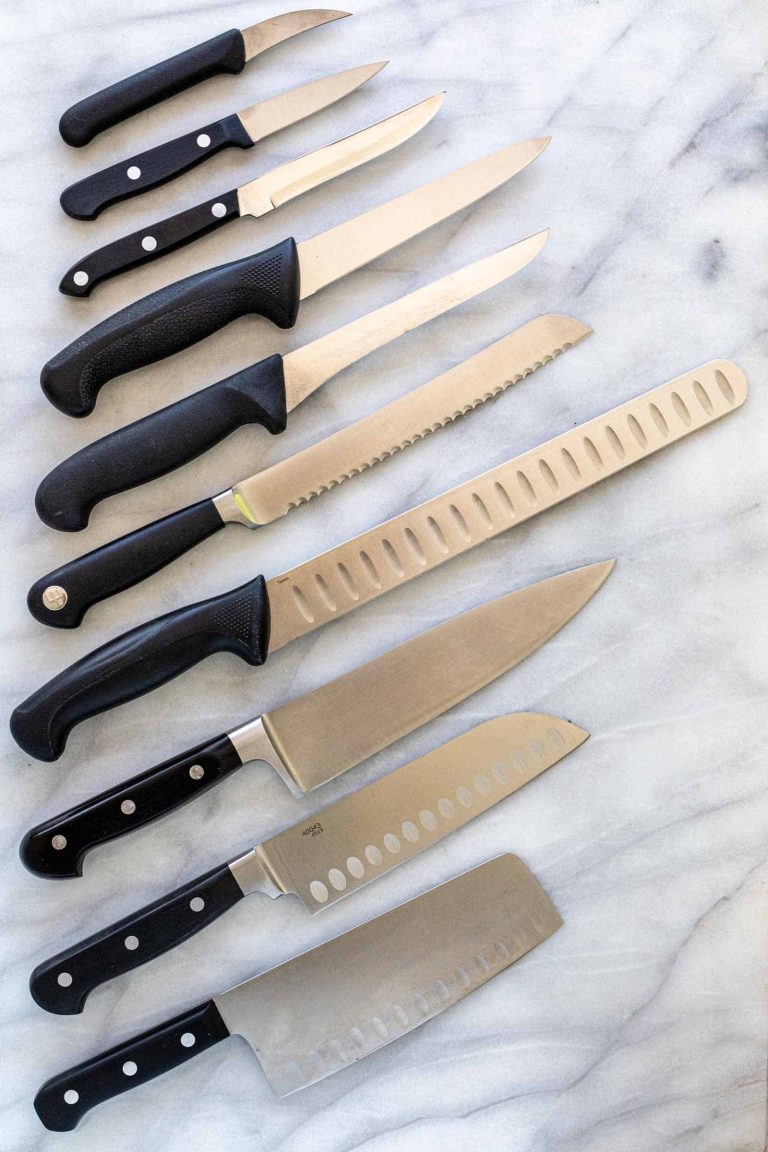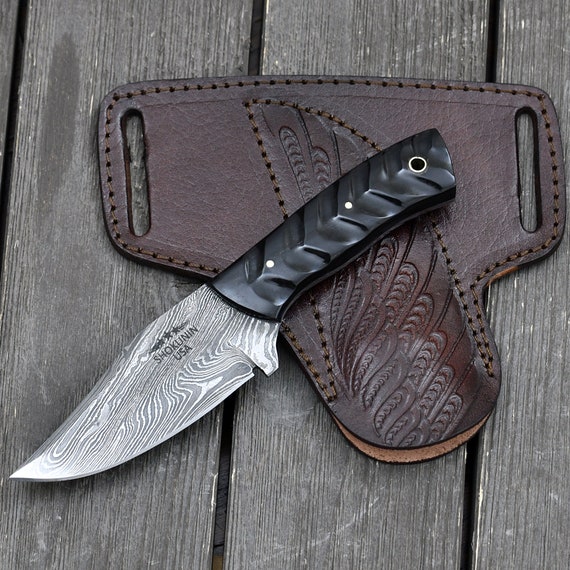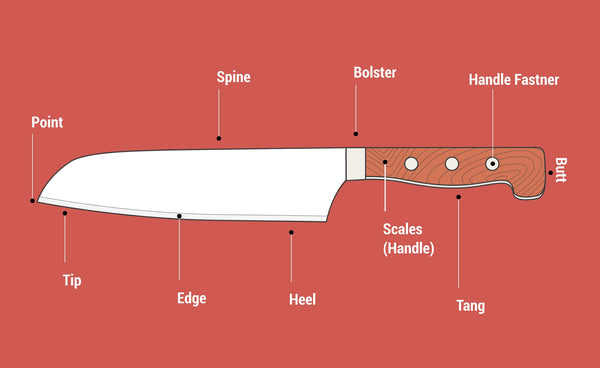Knife Skills for Home Cooks: Mastering the Basics
Master the basics of knife skills for home cooks in Knife Skills for Home Cooks, a concise guide to honing your cutting techniques.
Why Knife Skills Are Essential For Home Cooks
Why Knife Skills are Essential for Home Cooks
Mastering knife skills is crucial for home cooks as it enhances efficiency in the kitchen, improves safety while handling knives, and helps achieve consistent and even cooking.
Efficiency is key when it comes to preparing meals at home. **Proper knife techniques** enable you to **minimize preparation time** by swiftly and accurately chopping, slicing, and dicing ingredients. You can **easily handle a variety of cutting tasks** when you have good knife skills.
Safety should always be a top priority in the kitchen. With **adequate knife skills**, you can reduce the risk of accidents and injuries. By holding the knife correctly and using proper cutting motions, you can **minimize the chances of lacerations and slips**.
Consistency in the size and shape of ingredients is essential for **even cooking**. When you **master knife skills**, you can **maintain uniform cuts**, resulting in ingredients that cook evenly. This ensures that every bite of your dish is cooked to perfection.
Must-Have Knives For Every Home Cook
A Chef’s Knife, Paring Knife, and Bread Knife are the must-have knives for every home cook. A Chef’s Knife, also known as a cook’s knife, is versatile and can be used for a variety of tasks such as chopping, slicing, and dicing. It has a broad and tapered blade that allows for easy rocking motion. A Paring Knife is smaller in size and has a pointed tip, making it ideal for peeling, trimming, and other intricate tasks. It is perfect for precision work. Lastly, a Bread Knife is designed specifically for slicing through bread without crushing it. Its serrated edge ensures clean cuts without tearing the loaf. These three knives are essential for any home cook to master knife skills and achieve professional-level precision in the kitchen.
Proper Knife Holding Techniques
Mastering proper knife holding techniques is crucial for home cooks to improve their knife skills. The pinch grip is the most common and effective way to hold a knife. Place your thumb and index finger on the blade just above the handle, with your other fingers wrapped around the handle for stability. This grip allows for better control and precision while cutting.
Another technique is the handle grip, where you hold the handle firmly in your hand, with your thumb resting on the side of the handle. This grip is useful for tasks that require less precision, such as chopping herbs or slicing through softer ingredients.
By mastering these two techniques, home cooks can improve their knife skills and perform tasks more efficiently. Remember to practice regularly and maintain a sharp knife to ensure safe and effective cutting in the kitchen.
Knife Care And Maintenance
Proper storage of your knives is essential in preventing accidents in the kitchen. Be sure to invest in a good knife block or magnetic strip to keep your knives upright and easily accessible. This will not only protect your knives from damage, but it will also prevent mishaps when reaching for them.
Regular sharpening is key to maintaining the sharpness and precision of your knives. Consider investing in a quality knife sharpener or take them to a professional for sharpening. By keeping your knives sharp, you’ll reduce the risk of accidents caused by a dull blade.
Proper cleaning techniques are crucial for the longevity of your knives. Instead of using the dishwasher, hand wash your knives with warm water and mild soap. Dry them thoroughly before storing to prevent rusting and damage.
Knife Cuts: Mastering The Basics
Knife Skills for Home Cooks: Mastering the Basics
Julienne: Julienne is a knife cut that involves cutting vegetables or fruits into long, thin strips. It’s commonly used for stir-fries, salads, and garnishes. To julienne, start by cutting the ingredient into thin slices. Then, stack the slices and cut them into matchstick-sized strips.
Brunoise: Brunoise is a precise knife cut that results in small, uniformly diced pieces. It is often used in fine dining presentations. To achieve a brunoise cut, first, dice the ingredient into small squares. Then, carefully dice those squares into even smaller cubes.
Dice: Dicing is a versatile knife cut that involves cutting ingredients into evenly sized cubes. It’s commonly used in soups, stews, and casseroles. To dice, start by cutting the ingredient into batons, and then cut those batons into cubes of the desired size.
Chiffonade: Chiffonade is a technique used to cut leafy ingredients into long, thin strips. It’s often used with herbs and greens for garnishes or salad toppings. To chiffonade, stack the leaves together, roll them tightly, and then slice them thinly.

Credit: mysekkin.com
Essential Knife Skills For Everyday Cooking
Mastering knife skills is crucial for any home cook to ensure efficient and safe food preparation. Slicing, chopping, mincing, and dicing are fundamental techniques that will elevate your culinary prowess.
| Technique | Description |
|---|---|
| Slicing | Slicing involves making uniform, even cuts in a horizontal motion. It is ideal for creating thin slices of ingredients like tomatoes or meats. |
| Chopping | Chopping requires cutting ingredients into smaller, irregular pieces. Perfect for dicing onions or bell peppers. |
| Mincing | Mincing entails finely chopping ingredients into tiny pieces. Garlic and herbs are often minced to release their full flavor. |
| Dicing | Dicing involves cutting ingredients into small, square-shaped cubes. Commonly used for potatoes and carrots in soups or stews. |
By honing these essential knife skills, you’ll be able to tackle any recipe with confidence and precision. Remember to always use a sharp knife and practice proper technique to enhance your efficiency in the kitchen. Happy cooking!
Tips For Improving Knife Skills
Improving your knife skills is essential for any home cook. With proper techniques and tools, you can quickly and efficiently prepare ingredients for your favorite recipes. Here are a few tips to help you master the basics:
- Practice proper knife techniques: Adopting the correct grip and position will ensure precision and safety in your cuts. Avoid using excessive force and maintain control over the knife throughout the process.
- Choose the right cutting board: Opt for a sturdy cutting board made of wood or plastic. Avoid glass or marble surfaces, as they can dull your knives.
- Keep knives sharp and well-maintained: Regularly sharpen your knives using a honing stone or professionally sharpen them when necessary. Clean and dry them properly after each use to prevent rust.
By implementing these tips, you’ll be on your way to becoming a knife skills pro in no time. Happy cooking!
Common Mistakes To Avoid
Using the wrong knife for the task is a common mistake many home cooks make. Each knife is designed for a specific purpose, and using the wrong one can result in a lack of control and precision. It’s important to understand the different types of knives and their intended uses.
Applying too much force while cutting is another mistake to avoid. This not only makes the task more difficult but can also lead to accidental injuries. Instead, it’s recommended to let the sharpness of the knife do the work and let gravity assist with the cutting motion.
Neglecting proper knife maintenance is also a common mistake. Regular honing and sharpening of your knives are essential for maintaining their performance and longevity. This includes using a honing steel to straighten the blade and sharpening with a whetstone or knife sharpener when necessary.
Resources For Further Improvement
For home cooks looking to enhance their knife skills, there are several valuable resources available. Online tutorials and videos are a convenient way to learn and practice at your own pace. Websites like YouTube and cooking blogs offer a vast selection of instructional content. Be sure to search for specific techniques or knife skills exercises to find the most relevant tutorials.
If you prefer a more hands-on approach, consider attending a knife skills class or workshop. Many culinary schools and cooking studios offer classes specifically designed to help home cooks improve their knife skills. These classes often provide expert guidance and personalized instruction to help you master the basics.
Additionally, there are recommended books for cookbook enthusiasts who want to delve deeper into the world of knife skills. Look for titles written by renowned chefs or industry experts, as they often provide comprehensive guides with step-by-step instructions and helpful illustrations.
| Online Resources | Knife Skills Classes | Recommended Books |
|---|---|---|
| YouTube tutorials | Culinary schools and cooking studios | Books by renowned chefs and experts |
| Cooking blogs |
Conclusion
To become a skillful home cook, mastering knife skills is essential. By honing your cutting techniques, you can elevate your culinary creations to a whole new level. Start by choosing the right knife for the task at hand and maintaining its sharpness through regular honing and sharpening.
Practice proper hand positioning and grip to ensure safety and control. Developing knife skills will not only improve your efficiency in the kitchen but also enhance the presentation of your dishes. You’ll be able to slice, dice, and chop with precision, resulting in evenly cooked ingredients and appealing aesthetics.
Incorporating these techniques into your cooking routine may take practice, but the rewards are worth it. With time and dedication, you’ll find yourself slicing through vegetables effortlessly and achieving professional-level results. So, go ahead and give it a try! Explore different cutting methods, experiment with various ingredients, and embrace the art of knife skills.
Before you know it, you’ll be impressing yourself and others with your culinary prowess.






